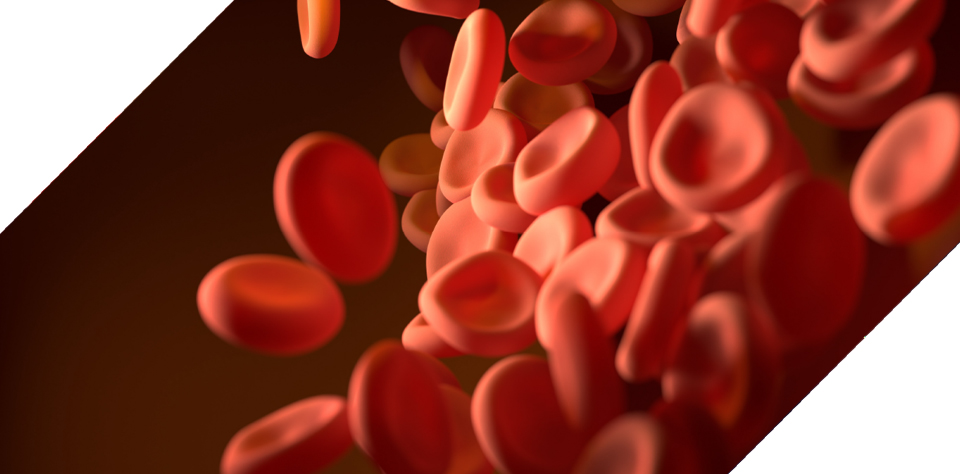What is deep vein thrombosis?
A deep vein blood clot occurs when blood flow becomes slow or stagnant, allowing platelets or clotting factors to form a clot. Commonly found in the legs, deep vein thrombosis (DVT) can also occur in other portions of the body, such as the arms or pelvis.

Symptoms of a Deep Vein Thrombosis
Deep vein thrombosis (DVT) is sometimes asymptomatic, but is most often accompanied by one or more of these symptoms:
- Pain, often described as a cramp or soreness, that worsens when standing, walking, or flexing the foot,
- Swelling in the affected leg, ankle, or foot, accompanied by a feeling of heaviness or tightness,
- Skin over the affected area may feel warm to the touch,
- Reddish-purple skin discoloration,
- Tenderness that may cause sensitivity to touch on or around the blood clot,
- And visible veins – especially those that become more prominent.
If you suspect you may have a DVT, it is essential to quickly seek a medical evaluation for an accurate diagnosis and appropriate procedure.

Deep Vein Thrombectomy: Step by Step
Benefits of Deep Vein Thrombectomy
When blood thinners and other conservative measures alone are not effective at removing blood clots deep within the veins, a deep vein thrombectomy may be the most efficient means of removal.

What to Expect After Deep Vein Thrombectomy
After a blood clot is removed during a deep vein thrombectomy, the incision is closed with stitches or medical grade adhesive strips. You will be administered blood thinners, pain medication, and antibiotics to prevent infection. You may need to wear compression stockings as advised by your healthcare provider and gradual physical activity may be added into your daily routine. Follow-up appointments will ensure your progress is monitored and no further medical intervention is required.
Questions? We have answers.
Deep vein thrombosis (DVT) is diagnosed through a combination of medical history, physical examination, and various diagnostic tests. Here are brief explanations of the various methods used for diagnosing DVT:
- Medical history and physical examination: The doctor will inquire about your symptoms, medical history, and risk factors for DVT. They will also conduct a physical examination to check for signs such as swelling, redness, warmth, and tenderness in the affected area.
- Ultrasound imaging: Doppler ultrasound, which used sound waves to create images of blood flow within the veins, is a common diagnostic tool for DVT. This non-invasive tool can show the presence, location, and extent of a clot.
- D-dimer blood test: D-dimer is a protein fragment that is released into the blood stream when a blood clot breaks down. A D-dimer test measures the level of the protein. If elevated, it suggests the presence of a blood clot.
- Venography: This imaging technique involves injecting a contrast dye into the veins and taking X-Ray images to visualize the blood flow and possible abnormalities.
There are several risk factors that may contribute to the likelihood of developing deep vein thrombosis (DVT). These risk factors can be categorized into three main groups:
- Medical or health-related risk factors:
- Previous history of DVT or pulmonary embolism (PE)
- Family history of DVT or inherited blood clotting disorders
- Certain medical conditions, such as cancer, heart disease, lung disease, and inflammatory bowel disease
- Recent major surgery (Such as hip or knee replacement)
- Trauma or injury that damages blood vessels
- Prolonged immobility, such as being bed-ridden, long distance travel, or sitting for extended periods of time
- Hormone replacement therapy or oral contraceptives
- Lifestyle-related risk factors:
- Obesity or being overweight
- Smoking
- Excessive alcohol consumption
- Sedentary lifestyle or lack of regular physical activity
- Other factors:
- Age
- Pregnancy and the postpartum period
- Certain medications, including hormone therapy, chemotherapy, and certain anti-inflammatory drugs
Having one or more of these risk factors does not guarantee you will develop DVT, and individuals without these risk factors can still develop the condition. However, understanding and managing these risks can help reduce the chances of developing DVT. If you have concerns or think you may be at risk, it is recommended to consult with a healthcare professional.
The safety of deep vein thrombectomy depends on several factors, including the patient's overall health, the extent and location of the blood clot, and the expertise of the surgical team performing the procedure. At Clarity Care, our skilled physicians offer catheter-directed deep vein thrombectomy, which is minimally invasive and can reduce risk of complications and improve patient outcomes. Potential risks—which are considered rare—include bleeding, infection, damage to blood vessels, or damage to surrounding tissue.
If you are considering deep vein thrombectomy, there are alternative methods of procedure that you may consider:
- Alternative 1 >> Anticoagulation Medication. Also known as blood thinners, these medications can prevent clots from growing larger and stop the formation of new clots. They do not dissolve existing clots, but instead allow the body' natural clot-dissolving mechanisms to gradually break it down.
- Alternative 2 >> Thrombolysis. Typically reserved for severe cases of DVT, thrombolysis uses clot dissolving medications to break down clots via a catheter placed directly into the clot.
- Alternative 3 >> Compression stockings. In some cases, non-surgical options such as compression stockings can be used to improve blood flow and prevent swelling by applying pressure to the veins.
- Alternative 4 >> Inferior Vena Cava (IVC) Filters. IVC filters are small devices placed in the interior vena cava, the large vein that returns blood from the lower body to the heart, to prevent blood clots from traveling to the lungs.
- Alternative 5 >> Exercise and Physical Activity. Regular exercise and physical activity can help improve blood circulation and reduce the risk of developing DVT. Walking, cycling, swimming, and other low impact activities are generally recommended.
The choice of procedure for DVT depends on various factors and should be discussed with your healthcare provider, who can provide guidance based on individual circumstances and preferences.
Clarity Care Imaging & Specialty Care is at 9040 Quivira Road in Lenexa, Kansas. Our center is conveniently located just north of Oak Park Mall with easy access from much of the Kansas City area including Overland Park, Olathe, Shawnee, Merriam, Mission, Leawood and Prairie Village.
Schedule an appointment?
LET'S GET STARTED
Care that covers Kansas City communities in Kansas & Missouri.
The Clarity Care Imaging & Specialty Care office is conveniently located at 9040 Quivira Road in Lenexa, Kansas. Our center is just north of Oak Park Mall with easy access from much of the Kansas City area including Overland Park, Olathe, Shawnee, Merriam, Mission, Leawood and Prairie Village.




